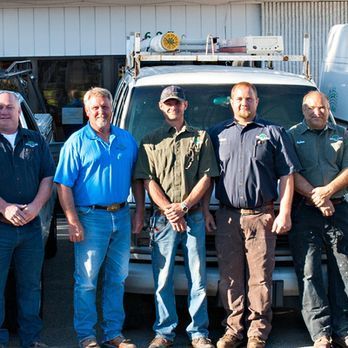What Is a Sump Pump?
Frozen pipes are a common issue, especially during the cold winter months. When temperatures drop, the water inside pipes can freeze, potentially causing them to burst. Dealing with frozen pipes can be stressful, but with the right knowledge and tools, you can often resolve the issue yourself and prevent costly damage. This guide walks you through the steps to safely thaw and fix frozen pipes.
All About Sump Pumps: What They Are and How They Work
If you've ever wondered what a sump pump is and why it's crucial for your home, you're not alone. In this guide, we'll demystify sump pumps, explaining their purpose, how they work, and why you should consider having one in your basement.
Understanding the Basics: What Is a Sump Pump?
At its core, a sump pump is a simple but effective device designed to prevent basement flooding. Here's what it does:
Water Collection: A sump pump is installed in a pit, known as a sump pit or sump basin, usually located in the lowest part of your basement. Its primary function is to collect excess water that might enter your basement, whether due to heavy rain, melting snow, or a rising water table.
Pump Action: When the water in the sump pit reaches a certain level, the sump pump activates. It starts pumping the water away from your home to a designated drainage area, preventing it from flooding your basement.
Why Do You Need a Sump Pump?
Basement flooding can lead to costly and extensive damage. Here's why a sump pump is an essential addition to your home:
Prevent Water Damage: A sump pump actively manages water levels, reducing the risk of water damage to your basement, including ruined belongings, structural damage, and mold growth.
Protect Your Foundation: Excessive moisture can weaken your home's foundation. A sump pump helps maintain a stable foundation by keeping water at bay.
Maintain Home Value: A dry, well-maintained basement is an attractive feature for potential homebuyers, helping preserve and potentially increase your property's value.
Types of Sump Pumps
There are two primary types of sump pumps:
Submersible Sump Pumps: These are installed within the sump pit and can handle higher water volume. They are quieter but may have a shorter lifespan.
Pedestal Sump Pumps: These sit above the sump pit, making them easier to service. They are typically louder but have a longer lifespan.
Maintenance and Testing
To ensure your sump pump works when you need it most, regular maintenance and testing are essential. Check the pump, pit, and discharge pipe for any clogs, damage, or debris. It's also a good practice to test the pump periodically to confirm it activates properly.
A sump pump is a valuable addition to any home, especially if you live in an area prone to heavy rainfall or have a high water table. It's your first line of defense against basement flooding and the extensive damage it can cause. Understanding what a sump pump is and how it works is the first step in protecting your home from water-related disasters.

Emergency Plumbers
At sunshine plumbers, we are proud to be on call 24 hours a day, 365 days a year, ready to provide prompt and reliable emergency plumbing services
Residential Plumbing
Let sunshine plumbers take care of your plumbing needs, and we'll make sure your home's plumbing system runs smoothly and efficiently.
Commercial Plumbing
Trust sunshine plumbers to keep your commercial plumbing system in top shape, ensuring smooth operations and customer satisfaction.
List of Services
Contact
(844) 822-7445
Links
Disclaimer
Sunshine Plumbers.com operates as a plumbing referral company, connecting users with independent plumbers in their local areas. Please take note of the following essential information: Disclaimer
All Rights Reserved | Sunshine Plumbers
